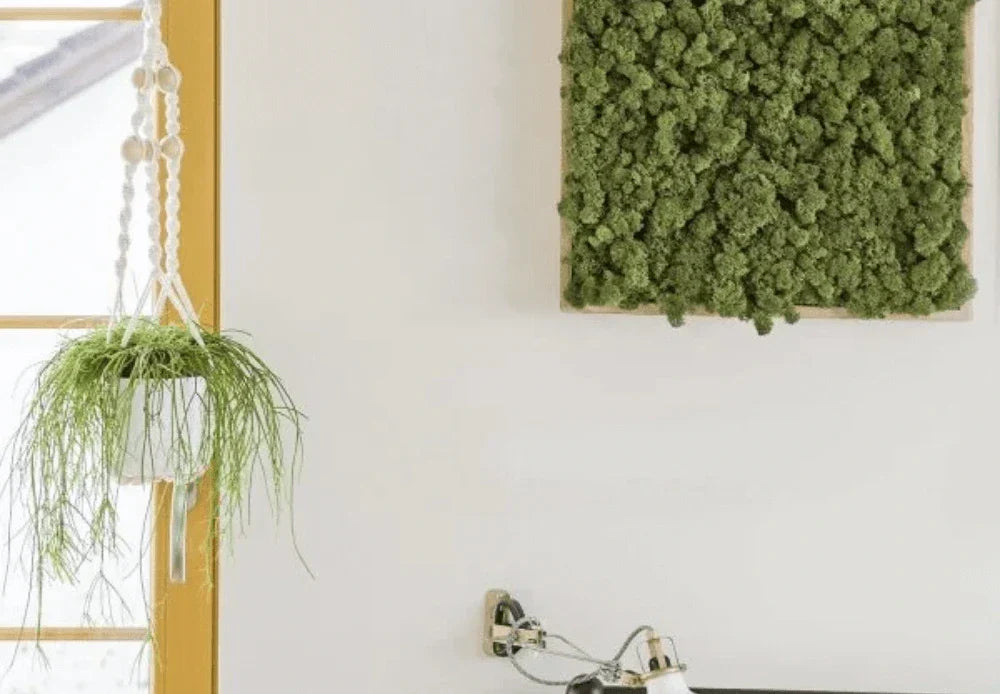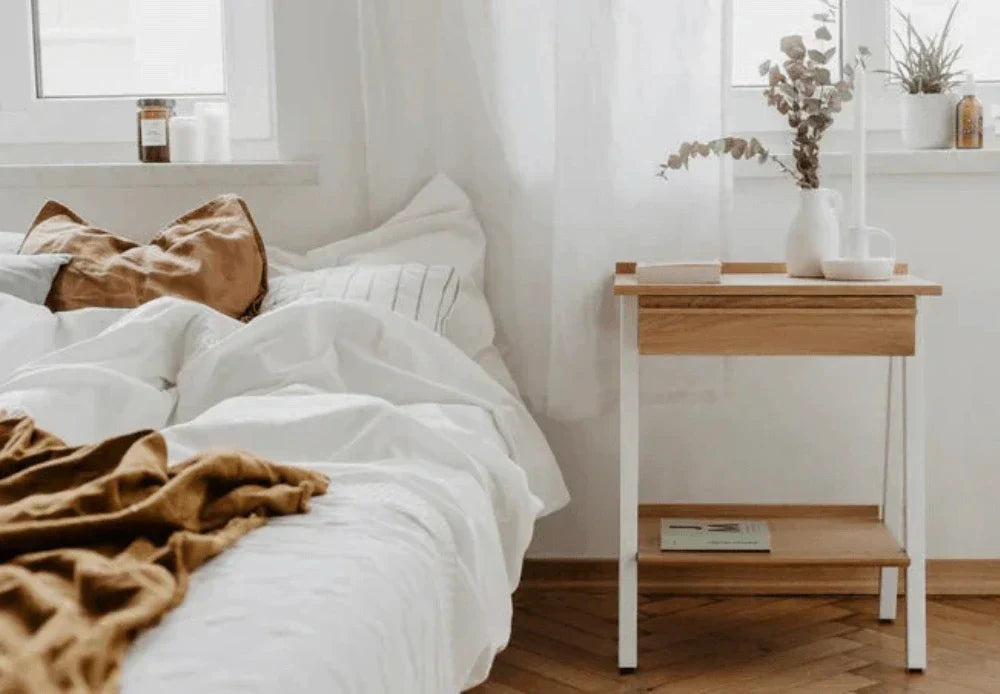Is the air in your home really good for you? Are you breathing freely, or struggling with a dry throat, itchy nose, and tired eyes? Sometimes it's not the dust, not the air conditioning, not allergies. It’s simply… air humidity – or rather, the lack or excess of it.
What should the humidity in your home be for you to feel good? What percentage is still “okay,” and when does it become a problem? In this article, I’ll show you why optimal indoor humidity is more than just a number on a display. It’s your comfort. Your health. Your peace of mind.
You’ll learn how to control air humidity at home without stress, what the risks of imbalance are, what causes them, and – most importantly – how to maintain proper humidity not just in winter, but all year round.
Table of Contents:
- Ideal Indoor Humidity – What Levels Are Recommended?
- How to Measure Humidity at Home?
- Consequences of Incorrect Humidity Levels
- How to Ensure Optimal Humidity at Home?
- Summary – Maintaining Optimal Humidity at Home
Ideal Indoor Humidity – What Levels Are Recommended?
Good air should be neither too dry nor too dense. You need balance – that golden value that makes breathing easy, sleep deep, and mornings headache-free.
The optimal indoor humidity level is 40–60%. That’s enough for your body to function properly, your skin to stay smooth, and your wooden furniture to remain stable and beautiful for years.
We’re talking about relative humidity here – the ratio of water vapor in the air to the amount it could hold at a given temperature. Sounds technical, but it’s simple in practice: too little moisture – dryness. Too much – mold and stuffiness.
The key is keeping humidity within a safe range. In practice, that means regularly checking your indoor air humidity. Only then can you take action and ensure the air in your home feels right – for you, your family… even your plants.
Relative Humidity and Its Impact on Comfort and Health
You can’t see it. You don’t feel it immediately. Yet it affects everything – from how you sleep to how you wake up. Relative humidity can either create the right atmosphere or completely ruin it.
Too low? You wake up with a dry throat, dry skin, burning eyes. Too high? The air feels stagnant, heavy, suffocating. That’s why indoor humidity should remain within a range that supports your body and mind.
For most people, the best relative humidity is between 40–60%. Within this range, sleep is more restful, your body recovers more efficiently, and your respiratory system doesn’t have to work overtime.
If you wake up tired despite getting enough sleep – it’s not always the mattress or stress. Sometimes your bedroom air just needs more – or less – moisture.
Absolute Humidity – How It Differs from Relative Humidity
Sometimes one word makes all the difference. That’s the case with humidity. Not all humidity is created equal.
Absolute humidity is the exact amount of water vapor in the air, measured in grams per cubic meter. It’s not dependent on temperature. It doesn’t fluctuate as easily. It’s pure physics.
Relative humidity, on the other hand, is more “everyday.” It tells you how much moisture is in the air compared to how much more it could hold at a given temperature. This is the value we care about when talking about maintaining proper humidity at home.
Why does it matter? Because you can have the same absolute humidity in summer and winter – but your body will feel it very differently. In winter, with the heat on, moisture disappears in an instant. And so do you.
How to Measure Humidity at Home?
Don’t guess. Don’t rely on a hunch. Instead of wondering whether the air feels too dry or too stuffy – simply measure the humidity level.
It’s really easy. Nowadays, you don’t need to be an expert to monitor indoor humidity. All you need is a small device that tells you the truth about what you're breathing in.
And sometimes… you just need to look. Some things react to air so naturally they don’t need batteries or a screen.
That’s how the Gate frame by Borcas works – a decoration with reindeer moss that changes texture depending on humidity. If the air is dry – the moss stiffens. When humidity returns to normal – it becomes soft, delicate, springy. It’s a living tester that signals changes in your home’s microclimate.
Measure air humidity – but also… learn to observe it. Nature has its ways. You just need to make space for it in your home.
Hygrometer – Types and How It Works
Sometimes a single glance tells you the air in your home is becoming unbearable. But if you want to know more – get a hygrometer.
It’s a humidity sensor that acts as a compass for your indoor climate. It shows when it’s dry, when it’s too humid, and when you need to take action. It can be digital, analog, modern… or beautiful.
That’s exactly what the Borcas hygrometer is – it doesn’t look like a device. More like a small sculpture with soul. Wooden casing, minimalist design, and a precise mechanism inside. Place it in the living room, office, or bedroom – and you’ll always know if your home is breathing the way it should.
Some devices also have a hygrostat – a system that automatically turns on a humidifier or dehumidifier when levels go off track. A great option if you like automation and don’t want to think about it.
But sometimes a moment of attention and a simple reading is enough – to make a decision that improves your day.
How to Interpret the Readings?
Okay – you’ve got a hygrometer, you’re looking at the numbers… now what?
Understanding the numbers is the first step to maintaining optimal humidity at home. A reading means nothing if you don’t know what it tells you.
Humidity between 40–60% is the golden standard. That’s when air is most comfortable – for people, wood, plants, and sleep.
If it drops below 40%, you may feel skin dryness, coughing, or nasal irritation. Wooden furniture may crack, and the moss in the Gate frame will stiffen like a dry twig.
If it goes above 60%, you risk stuffiness, condensation on windows, and mold growth. The moss becomes soft and damp, and the air turns sticky and heavy.
The conclusion? Monitor, analyze, act. This isn’t expert knowledge – it’s a daily tool that helps you live better.
Consequences of Incorrect Humidity Levels
Air can be like medicine. But also like a silent saboteur. When its humidity goes off the rails, you – and your home – start feeling it. Often sooner than you think.
In winter, heating reduces humidity so effectively that your apartment turns into a desert. Moisture drops silently – a turned-up radiator, closed windows, a few cold days… and you’re breathing museum air, where everything cracks from dryness.
In summer, with poor ventilation, moisture has nowhere to go. It builds up. Settles on windows. Seeps into walls. That’s when we talk about excess humidity – and how every hour in such a microclimate increases the risk of mold, dust mites, and allergies.
Your body will notice. So will your furniture. But better not to wait for the signs. Better to act early.

Reindeer moss in an oak frame wall decoration
Low Air Humidity – Symptoms and Risks
Air can be like medicine. But also like a silent saboteur. When its humidity drops below the norm, you – and your home – will feel it. And often faster than expected.
In winter, heating lowers humidity so efficiently that your home turns into a desert. The drop happens silently – just a turned-on radiator, closed windows, a few cold days… and suddenly you’re breathing air like in a museum, where everything cracks from dryness.
In summer, with poor ventilation, moisture has nowhere to go. It accumulates. Clings to windows. Seeps into walls. That’s when we talk about increased air humidity – and how every hour in that microclimate raises the risk of mold, dust mites, and allergies.
Your body senses it. So does your furniture. But it's better not to wait for the signs. It’s better to act early.
High Air Humidity – Effects on Health and Your Home
Many people think dry air is the only problem. But overly humid air can be just as troublesome – only in a different way. Quiet. Slow. Under the radar.
High humidity makes it harder to breathe. The air feels sticky – you can't see it, but you feel it with every step. Over time, it settles on walls, windows, clothes. It seeps into wood, wallpaper, fabrics.
Excess moisture is the first step toward mold, mildew, and bacteria. In bathrooms, kitchens, and poorly ventilated rooms, it only takes a few days for stains, patches, and bad smells to appear. But the moisture doesn’t stop at the surface – it goes deeper. Into the building's structure. Into the health of your loved ones.
In such an environment, your body doesn’t rest. Instead of regenerating at night, it fights microorganisms. You may start coughing, develop allergies, or feel chronic fatigue.
So don’t underestimate this opposite extreme. Because excess humidity isn’t freshness – it’s the beginning of bigger problems.
How to Ensure Optimal Humidity at Home?
You know the problem now. You know what too dry or too humid air does. But how do you take control? How do you ensure balance always rules your home? The answer: take conscious action. Every day. With intention.
Maintaining proper humidity is more than a one-time humidifier use. It’s a process. A ritual. A response to the season, the weather – even your habits.
In winter, the air can be dry as paper. Heating reduces moisture faster than you can boil water.
In summer, there’s stuffiness – that heavy feeling that weighs down every breath.
That’s why it’s worth it to:
- Keep humidity between 40–60%, the range that's optimal for both health and your interior
- Monitor humidity regularly – with a hygrometer or… nature itself
- Ensure good airflow – regular ventilation and thoughtful furniture placement matter
- Limit indoor laundry drying and cooking without a range hood – small things, big impact
- Use plants that help regulate microclimate (like ferns, peace lilies, ivy)
Maintaining optimal humidity begins with awareness – and ends with simple daily actions. And in that daily routine, two allies stand out:
- Gate frame – a living humidity tester with reindeer moss that shows you what the air feels like
- Borcas Hygrometer – a stylish and precise air humidity sensor that becomes part of your decor
With their help, maintaining proper humidity becomes easy. Or rather… natural.
Summary – Maintaining Optimal Humidity at Home
Taking care of proper humidity isn’t a passing need – it’s a daily commitment to your health, comfort, and the longevity of your interiors. When the humidity level at home is optimal, you sleep better, breathe easier, and wooden furniture and plants feel just as good as the people living there.
Awareness and regular observation are key. Both classic tools – like a precise hygrometer that measures relative humidity – and natural, more subtle indicators, like the Gate frame with reindeer moss, which visually shows the condition of the air, can help you monitor your environment.
Maintaining proper humidity isn’t magic. It’s just a few good habits and a second glance – toward the air that surrounds you.





